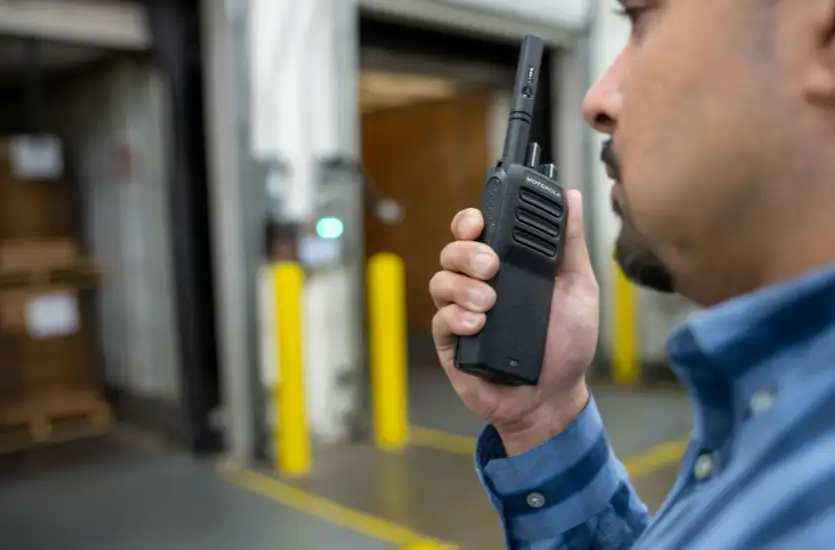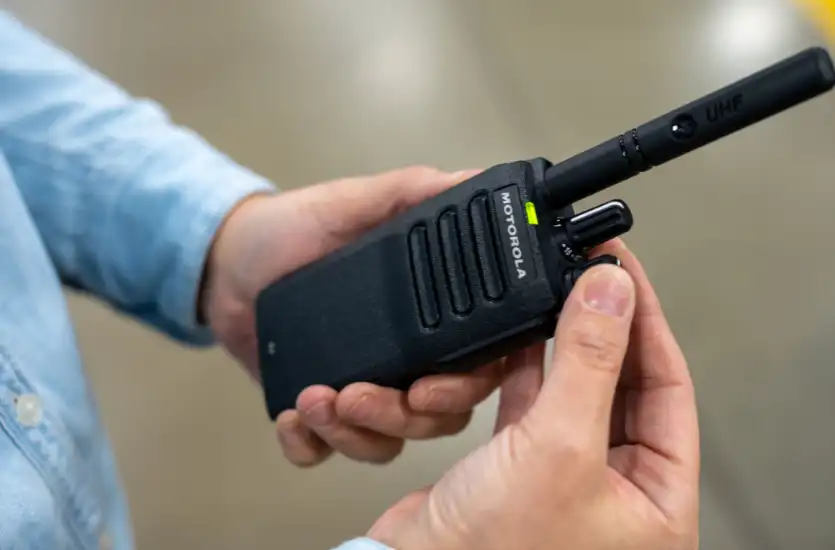Imagine coordinating a large team without everyone talking over each other—that’s where digital radio systems like DMR and P25 come in. These advanced networks use talk groups—virtual channels that keep communication focused and organized.
Whether managing emergencies or day-to-day operations, talk groups allow users to connect with the right people at the right time. Learning how they work can transform the way teams collaborate, making communication clearer and operations easier than ever before.
What are Talk Groups?
Talk groups in digital radio systems like DMR and P25 are designated virtual channels that allow specific groups of users to communicate independently within a shared network. Unlike traditional radio systems, where everyone on the same frequency hears all transmissions, talk groups organize communication by assigning unique identifiers to different teams or functions. This segmentation minimizes unnecessary chatter and helps users focus on relevant conversations.
For example, in public safety, police, firefighters, and medical teams might each have their own talk groups. This setup allows firefighters to discuss operations without interrupting police communications, even though all teams share the same radio infrastructure.
To illustrate, imagine a large construction site where various teams are working simultaneously. The equipment operators, site managers, and safety inspectors each use their assigned talk groups to coordinate tasks. An equipment operator can quickly report a machine malfunction to their group without interrupting the safety inspectors discussing site hazards.
By segmenting communication, talk groups improve organization and reduce the chaos of traditional systems, where every user on a channel can hear all transmissions, whether relevant or not because all that noise isn’t good for anybody.
How Do Talk Groups Work in Digital Radio Systems?
Sounds like a great concept, right? But just how do these talk groups actually work? We’re so glad you asked.
Talk groups operate differently depending on the type of digital radio system being used. In DMR systems, they rely on a two-slot TDMA structure, which organizes communications into logical channels. This setup allows for efficient use of bandwidth and supports multiple users on the same frequency. Industries like public safety and utilities frequently use DMR systems to keep communication organized and clear.
On the other hand, P25 systems offer both trunked and conventional modes for managing talk groups. These networks are designed to prioritize communication, particularly in emergency scenarios. By separating users into specific groups, P25 systems make it easier for first responders and other teams to collaborate effectively under pressure.
Benefits of Using Talk Groups
Digital radio systems are designed to handle a wide range of operational needs, and talk groups are at the center of this functionality. A large system might support hundreds or even thousands of talk groups. Smaller systems, with dozens to a few hundred talk groups, cater to more focused operations. Interestingly, while systems can handle a high volume of talk groups, the number actively in use at any given time is often much lower. It’s really all about the organization’s immediate needs.
Let’s explore the advantages that talk groups bring to the table.
Simplified Communication
Talk groups allow teams to separate communication channels by role, department, or function, eliminating unnecessary network noise. For example, a warehouse team can discuss logistics without interrupting the maintenance staff or security team. This structure prioritizes that everyone only hears what’s relevant to their work.
Better Security
Talk groups offer a layer of control by restricting access to authorized members. This not only keeps sensitive information contained but also reduces the risk of external interference. Many systems also support encryption, which protects conversations. This means talk groups are an excellent choice for industries like law enforcement or healthcare, where privacy is simply non-negotiable. After all, who wants other people to hear your personal medical details?
Improved Efficiency
Pre-defined talk groups make connecting with the right people faster when quick communication is needed. Users can also be added or removed as roles shift, allowing the system to adapt to changes without disrupting workflows. For instance, additional staff can join a specific talk group during an emergency to help coordinate a response.
Scalability
Whether it’s a small operation with limited groups or a large organization requiring hundreds, talk groups are designed to grow with the needs of the system. Industries like first responders, utility companies, and entertainment and event planners rely on this flexibility to manage communication effectively across different teams and locations.

Talk Groups in Action: Use Cases Across Industries
At this point, you probably get the gist and can see why talk groups enable better and more reliable communications. But just in case, let’s create some hypothetical use cases to help drive the point home.
Public Safety
As you can imagine, talk groups are the backbone of emergency response coordination when it comes to public safety. As we explained earlier, police, fire, and EMS operate on separate channels, giving them the opportunity to communicate without unnecessary cross-talk.
During a natural disaster, such as a hurricane, these groups collaborate by switching to shared talk groups when needed, such as when police coordinate road closures and firefighters manage rescues. This targeted communication allows responders to focus on their responsibilities while staying informed about broader operations. And as civilians, we wouldn’t want it any other way.
Utilities and Energy
For utilities, talk groups keep field crews, dispatchers, and management connected during outages. Imagine a power grid failure across a city: maintenance teams can use their talk group to locate the source of the issue, while dispatchers relay updates to customer service teams through another group.
If the repair requires additional resources, a separate talk group can quickly coordinate the deployment of additional crews. This means homeowners and business owners can get their utilities back up and running faster.
Transportation
Talk groups can literally change the game for logistics companies managing large fleets. Dispatchers can communicate directly with drivers assigned to specific routes without involving other teams.
For example, if a highway accident disrupts deliveries, dispatchers can notify affected drivers via their talk group while simultaneously rerouting other drivers through a different channel. This segmentation prevents confusion and helps maintain a steady flow of operations.
Event Management
We all know that Florida is a mecca for tourism. And large events in locations like Daytona Beach, Miami, and St. Petersburg rely on talk groups to keep operations organized. Security teams, event staff, and medical personnel each have their own channels but can switch to shared talk groups when collaboration is needed.
For example, during a medical emergency at a music festival in Miami, the medical team can update security on crowd control measures while event staff in Fort Lauderdale prepare alternate attendee routes. In Daytona Beach, talk groups might be used during a motorsport event to coordinate between safety crews and logistics teams.
Setting Up and Managing Talk Groups
Implementing talk groups in a digital radio system requires thoughtful planning and consistent management to keep communication well-organized. By following a structured approach, organizations can create a system that meets their operational needs and adapts as those needs change.
Here is what you can do to get your talk groups set up.
Planning and Configuration
- Define user roles and responsibilities to determine who belongs in each group.
- Create hierarchical talk groups for larger organizations to reflect team structures, such as leadership, departments, and field crews.
Programming Radios
- Assign unique talk group IDs for each group, making sure they align with the system’s organization.
- Follow programming best practices to make the setup intuitive and user-friendly for all team members.
Ongoing Maintenance
- Regularly review and update talk group lists to accommodate team structure or operations changes.
- Conduct periodic testing and provide training sessions to help users stay familiar with talk group functionality.
Challenges and Solutions
Any time you are setting up something new in an organization, it is important to think through what potential challenges may be thrown your way. Better yet, taking the time to also plan solutions for those challenges can ease organizational adoption.
Here are some tips to make the process a bit easier and avoid or minimize disruptions from implementation challenges.
Challenge: Interoperability Between Systems
Different radio systems may not be directly compatible, making it hard for teams to communicate.
- Solution: Use cross-system gateways or make sure the equipment supports standardized protocols like DMR or P25 to allow flawless communication.
Challenge: User Confusion with Multiple Talk Groups
Users may have difficulty navigating or remembering which talk group to use for specific situations.
- Solution: Provide clear labels or naming conventions for talk groups and offer regular training to familiarize users with the system.
Challenge: Capacity Issues During High Usage
Large-scale events or emergencies may lead to too many users on the system, causing delays.
- Solution: Plan system capacity with room for peak usage and consider adding extra talk groups or backup channels for high-demand situations.
Challenge: Resistance to New Technology
Some team members may be hesitant to adopt a new system.
- Solution: Involve users early in the planning process, provide hands-on training, and highlight the benefits of the new system to gain buy-in.
Challenge: Maintenance and Upkeep
Outdated talk group configurations can create inefficiencies.
- Solution: Schedule regular audits to review and update group structures and configurations, and train a designated team member to manage the system.
Partner with EMCI Wireless for Your Communication Needs
EMCI Wireless is proud to be your trusted Motorola Solutions Channel Partner in Southern and Central Florida. Whether you’re setting up talk groups for a large-scale operation or refining your existing communication system, our team is here to guide you every step of the way. With years of expertise in digital radio systems, we can help you create a reliable and organized network tailored to your organization’s needs.
Ready to optimize your communication? Contact us at EMCI Wireless today to learn more about our solutions, schedule a consultation, or explore our Motorola radio systems. Let us help you stay connected and keep your team on track!

